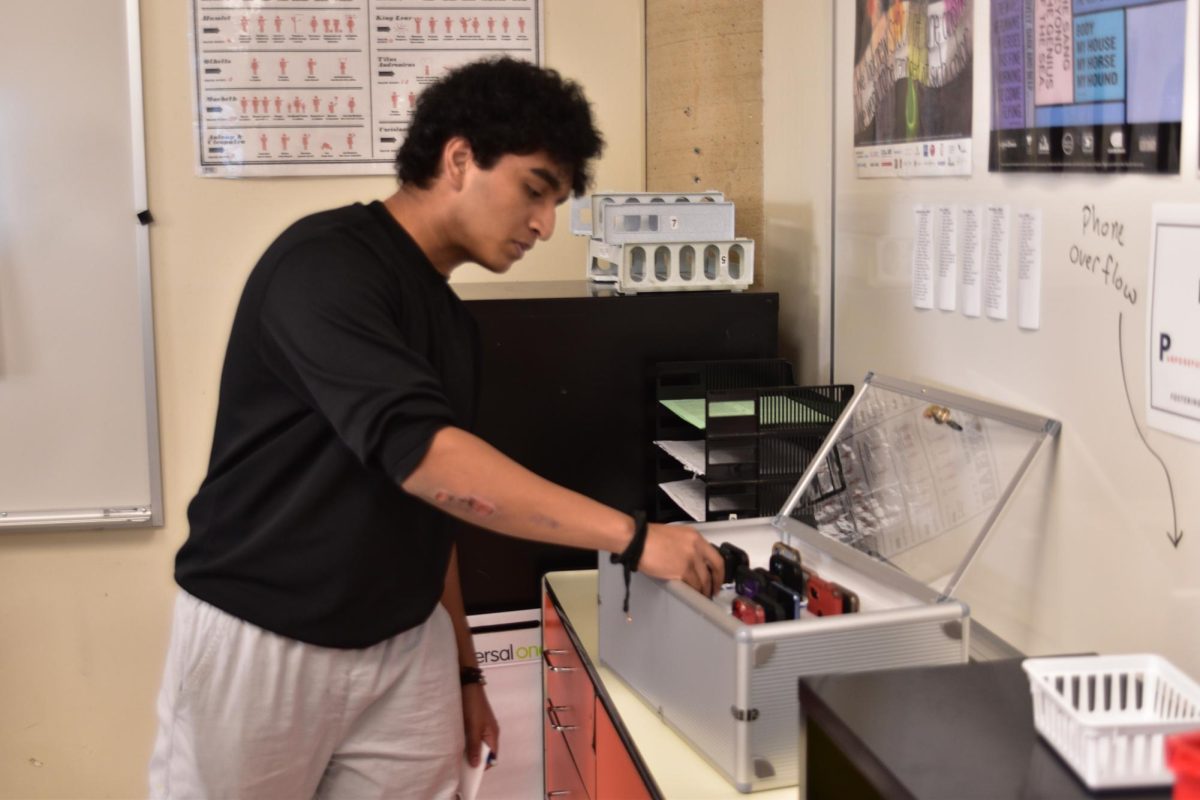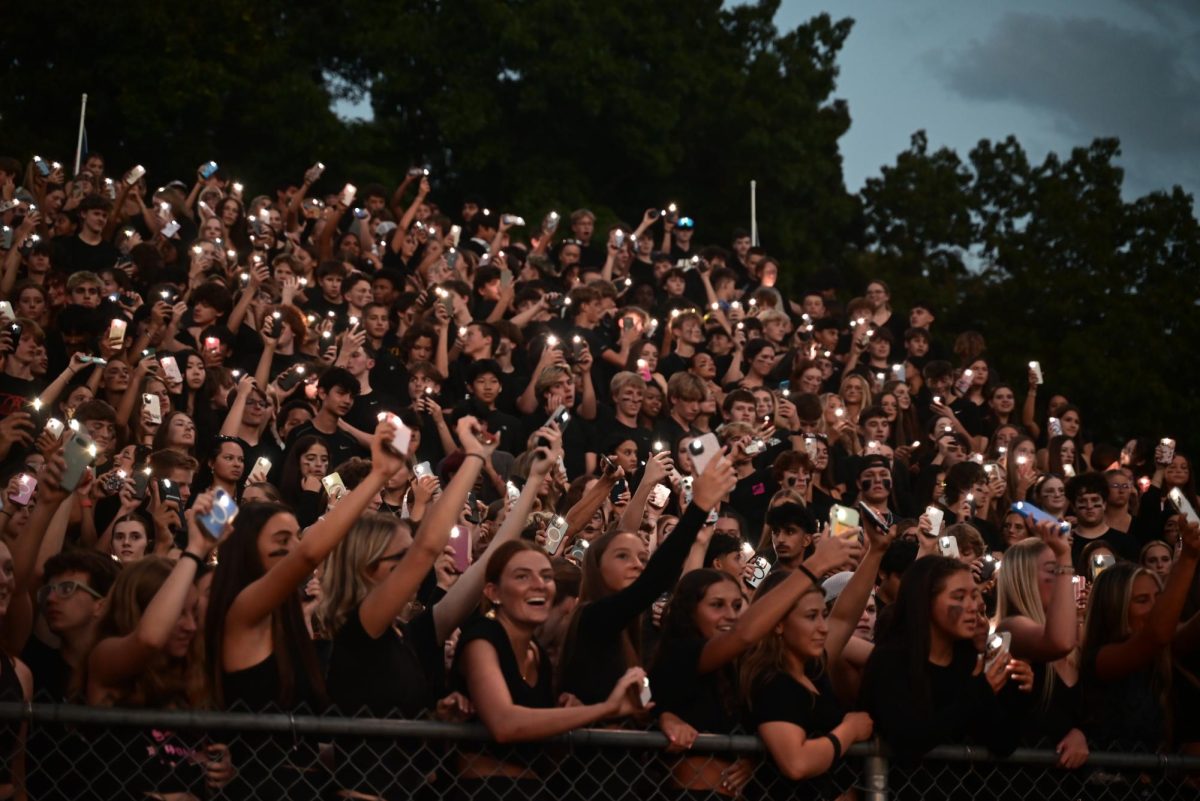Imagine a classroom where everyone’s focused, but not on the lesson, on their phones.
With cell phones becoming more of a distraction than a tool, teachers and students are bashing heads more than ever. How can schools handle phone use without shutting down the benefits of technology?
Assistant Principal Brionne Smith explained that the South’s administration wanted the cell phone policy to be flexible. Instead of having a strict building policy, they implemented a system using a stoplight graphic of red, yellow, or green zones that allows teachers to control phone usage in their own classrooms.
“We came up with the graphic that you often see in classes and leave it up to teachers to decide how to use that within their classroom,” Smith said.
However, some teachers have decided to ban phones entirely in their classrooms. Teachers across the school have different reasons for embracing stricter phone policies.
Science teacher Meghan Stewart is one of those who was quick to implement the new idea. She started using a phone drawer in class.
“Students were just so distracted by constant notifications,” she said.
Stewart said her goal is to minimize distractions, ensuring students are more engaged during lessons and group activities.
Stewart’s system requires students to lock their phones away for the entire class, which has helped her minimize distractions. While students may have their phones locked away during class time, they still have opportunities to use them during the school day.
Stewart says she thinks phones should be allowed during lunch, before school, and after school, but not during passing periods.
“It’s just like, hey, let’s meet up by the water fountain or whatever, and then everybody’s late to class,” she said.
However, some students don’t mind the different phone policies across the school. Sophomore Ryan Hertlein thinks it’s fair that some teachers are stricter than others.
“Even the teachers that take your phone at the beginning of class give it back at the end,” Hertlein said.
Hertlein said he also believes that the policy, overall, is fair because walking into class he knows what to expect, and he is able to focus better without the constant distraction.
“Everyone has to do it, and it’s expected each day,” Hertlein said.
South and its “Stop Light” policy is controlled by teachers, but many teachers operate their class on either “red” or “green” lights.
What about students who rely on their phones for medical reasons, some say? For example, some diabetic students may be using their phones to check their blood sugar, or students with hearing problems might use their phones to assist them.
Science teacher Ryan Steele explained that while exceptions can be made for students with medical devices linked to their phones, such cases are rare and typically written into a student’s plan.
“For most students, they’re not needed but on a very rare occasion, I absolutely understand needing to have a phone, but 99.9% of the time they don’t,” Steele said.
Breaking the phone policy repeatedly can lead to escalating consequences, according to Smith. Smith explained that when students continue to break the rules after multiple warnings, teachers may involve administrators.
“Sometimes teachers will give detention or give them their own consequences. And then other cases, when we’ve tried multiple times to work with the student, it’s reported to an administrator,” Smith said.
Once it reaches that level, students may face more serious consequences, including having to turn their phones to the office daily or other penalties.
Stewart firmly believes that phones can tank a student’s focus and grades.
“It totally destroys their focus. They can’t pay attention to what I’m saying,” Stewart said.
Stewart says that some students will even try to use their smartwatches to get around the no-phone policy, which only adds to the distraction.
Freshman Alishbah Mughai, who doesn’t have a phone, shared that the issue doesn’t bother her, because she doesn’t have a phone to distract her anyway.
“I am able to focus on my work with no distractions,” she said.
History teacher Steve Ehrstein takes student cell phones in his class, and he said he’s received positive feedback from parents who appreciate the effort to limit distractions in the classroom.
“A couple of them were thanking me,” Ehrstein said.
He said he also practices what he preaches, keeping his own phone off and away during class time to set an example for his students, encouraging responsibility.
While the school has guidelines for responsible phone use, Smith acknowledged that these efforts could be better publicized to students and parents.
“We have a system that kind of talks about responsible use, but I don’t think it’s publicized enough,” she said.
Some teachers make a conscious effort to teach students how to use technology responsibly, but Smith believes there’s room for improvement in how these guidelines are communicated to students.
“At the end of the day, the cell phone policy at our school is all about balance, encouraging students to stay focused on their learning while recognizing that technology plays a role in their lives,” Smith said.












![With her mom and sister cheering her, senior Maiyah Syed gets recognized on Senior Night for Color Guard, Oct. 10. "It felt pretty good [to be recognized]. I thought it was nice to have all my accomplishments laid out [by the announcer.] [I'm really going to miss] the evening practices and the bonding with the team over everything," Syed said.](https://psouthtreaty.com/wp-content/uploads/2025/10/emilypiccropped-Gavin-Brady-935x1200.jpg)


